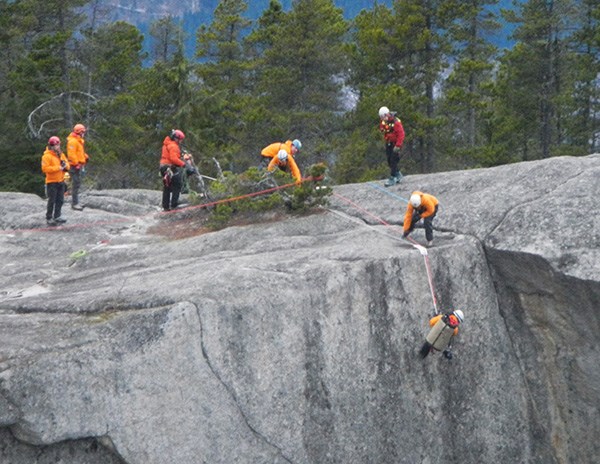If you get lost in the woods and are scared and injured, they’re the ones who are going to find you and bring you back to safety.
But should they have to?
It’s National Volunteer Week, a time when we should all be thanking the many volunteers who make our lives better, and few have a more dramatic impact on lives than the men and women of Squamish Search and Rescue (SAR). When we go out hiking, lose our way and get stranded on a frightening ledge, they’re the ones who will eventually heroically show up and bring us home. They’re the ones who will carry us back down those rocky stairs after we break an ankle.
But they’re all volunteers who have changed their plans for the day, found childcare and abandoned their families to devote themselves to the rescue, and in some cases, they really shouldn’t have to be there.
When we go hiking in the woods, we all need to assume some responsibility for our own safety and to bring the right gear that will enable us to survive when tragedy strikes.
We can start by letting someone know our plans. A simple text message to a friend or a post on Instagram or Twitter showing us at the trailhead will ensure the world at least knows where we started out and where we’re headed. Our cell phone should also be charged and with us.
As Squamish Search and Rescue notes on its website, there are other essentials that we need so we survive every hike, every time. These include extra water and food, additional clothing to protect us (no, that t-shirt won’t keep you warm at 2,000 ft. in the cold rain that is about to begin), a thermal blanket and plastic bag that can form a bivy shelter from the elements, and a first-aid kit and a little knowledge of how to use the items within it.
You’ll also need a headlamp with spare batteries, a map and compass, and a knife or multi-tool that can help you cut rope or saw branches to make tinder for your fire.
And you need proper footwear with decent soles, not flip flops.
The volunteers of Squamish SAR are halting their lives, leaving their work and families, to provide assistance, but it’s up to us to make sure we can survive until they reach us. The least we can do is help ourselves.
– Editor Christine Endicott


.png;w=120;h=80;mode=crop)
